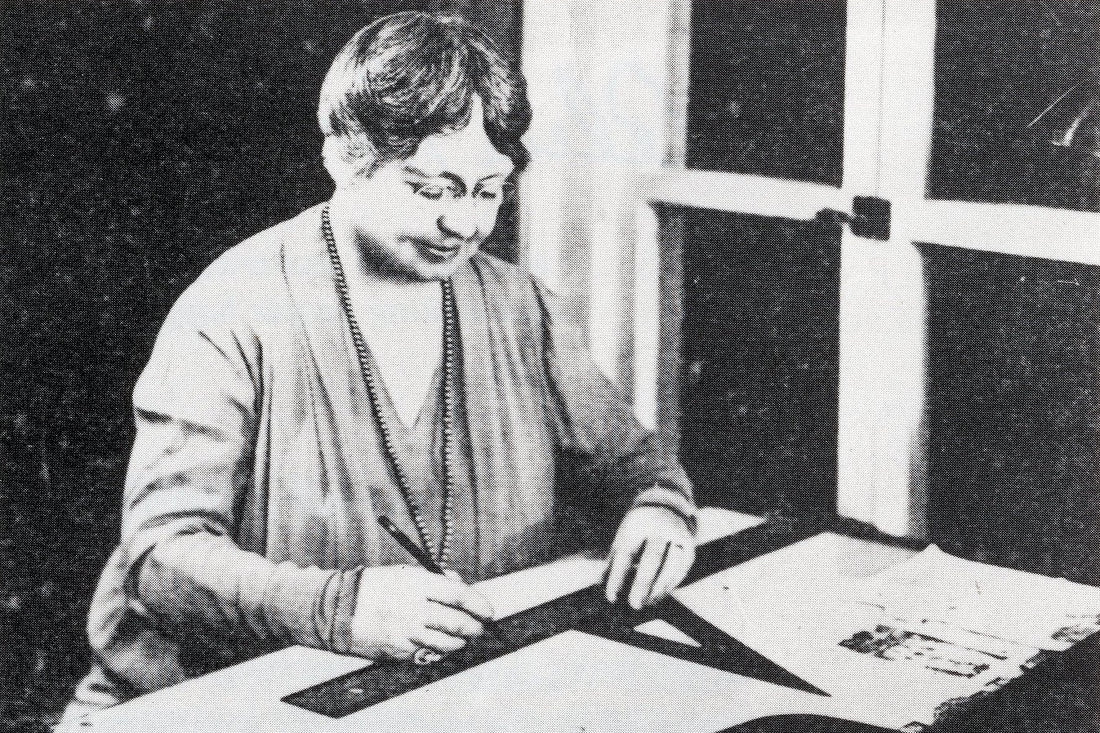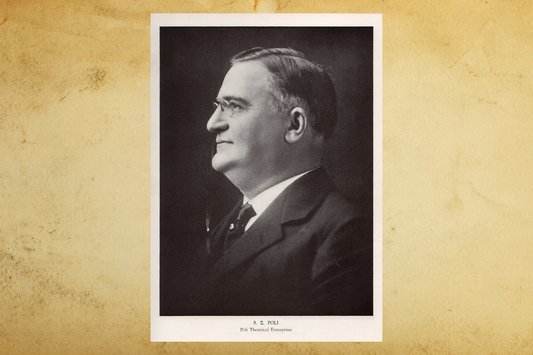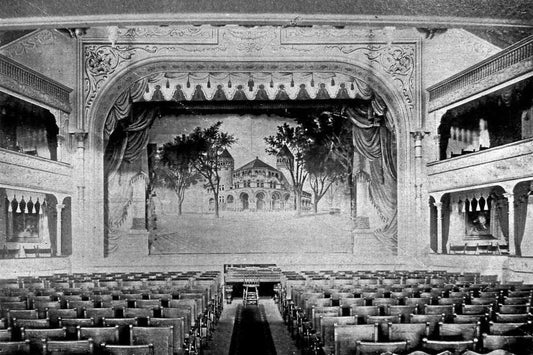You can find them in New Haven on Alden Avenue and Cleveland Road, on Chapel Street and Vista Terrace. There are dozens in Hamden, but you’ll find a handful as well in Cheshire and North Haven, Woodbridge and Orange.
Built between 1919 and 1933, they’re houses that represent the story of the improbable architect Alice Washburn—a woman who, at the age of 49 and with no formal training, began a career in which she would come to design and supervise the construction of nearly 90 local homes. These “Alice Washburns” are still considered by many to be among the most beautifully designed houses in the state.
“She’s part of this great blossoming of the suburbs that begins in the 1920s with the spread of the automobile and a period of builders who weren’t formally trained but had good eyes,” says Christopher Wigren, deputy director of the Connecticut Trust for Historic Preservation. “She’s, on one level, representative of a broader trend and, on the other, has a degree of quality that makes her stand out from her peers.”
sponsored by
Among her trademarks are oversized windows, which aren’t always obvious from the curb. “Sometimes you get inside these houses and the windows surprise you because they seem so much bigger from inside than outside,” Wigren notes.
Washburn homeowner Sara Reifler recalls such a surprise when she saw her house for the first time: “
Also endemic to Washburn’s style are “quality details,” Wigren says. A 1990 booklet written by Martha Finder Yellig, published in conjunction with a Washburn exhibit that year at the Eli Whitney Museum, cites “the ornamentation of doors, windows and cornices” as well as “the way the houses were sited on the newly plotted suburban lots.” They’re built low to the ground so their foundations don’t show and often include porches, sunrooms or terraces. “Formal fronts lead gracefully to more informal rear areas,” Yellig writes.
sponsored by
Nearly all of Washburn’s details are drawn from “early American house styles,” according to a pamphlet, also written in 1990, by William Stubbs and Charlotte R. Hitchcock for the New Haven Preservation Trust. Washburn put them together with “an unerring sense of style but a fine disregard for the historical accuracy of the ensemble.”
One of Washburn’s canvases was Westville, where she designed and built 10 homes between 1924 and 1930. Stubbs and Hitchcock refer to the neighborhood as “a garden suburb,” created after the death of Donald Grant Mitchell, whose farm, called “Edgewood,” was subdivided into lots for new homes. Washburn was in the right place at the right time to take advantage of that housing boom.
But the bulk of her homes can be found in Hamden’s Spring Glen neighborhood, 46 in all. Washburn homeowner Joshua Levitt of Spring Glen points out one quirky detail in his house: a small pass-through with three narrow, arched doorways and a surprise arched ceiling above them. The stairway is decorated with a scrollwork motif and a decorative newel post that matches the one in neighbor Sara Reifler’s house. The front door is flanked by leaded glass sidelights and topped with a transom window in a leaded glass fan design. All classic Washburn.
As beloved as they are, over the course of 90 years, many Washburns have been modified. Levitt’s house now sports a large addition and is missing details—built-in cupboards, an original mantel—that he’s seen in older photographs. When he dug out the hearth to restore it closer to its original look, he found a surprise: workmen had carved the timing—August 1921—into the stone. They’d also left hand-rolled cigarettes tucked into the mortar.
The average cost of a new Washburn house was $6,500. With her husband, Edward, Washburn purchased several lots offered during the suburban boom and built homes on speculation. Later, with her reputation growing, she was commissioned to design and build others. Perhaps her most famous client was the writer Thornton Wilder, for whom she built a home on Deepwood Drive in Hamden. (According to a 1991 article in Yankee magazine, the house was “built largely with proceeds from The Bridge of San Luis Rey,” his Pulitzer Prize-winning novel published in 1927.)
Washburn was particular about her projects. Martha Yellig writes that she was “well-known…for her close supervision of every facet of the construction process, including the interior decoration and landscaping. She even climbed ladders to inspect workmanship.”
In fact, Washburn was so attentive to her vision of what a house could be that when homeowners refused a detail due to the cost, she reportedly often included it anyway, at her own expense. This may be one reason why her business didn’t survive the Depression. Washburn declared bankruptcy in 1931 at the age of 61. By then, her husband had died, and she was forced to sell her own home and move into an apartment in Cheshire with her sister. She died in 1958, aged 88, without acknowledgment of her contribution to the local housing landscape.
But many of those who live in her light, graceful houses haven’t forgotten her. A standing room-only crowd attended a 2014 lecture on Washburn at the New Haven Museum, and homeowners are eager to talk about what makes their houses special. Both Levitt and Reifler have artifacts—books, photographs, a commemorative blanket—that “came with the house.”
Elements of Washburn’s work may be bricked over, altered or torn out, but her legacy is still standing.
Written by Kathy Leonard Czepiel. Photos 2-4 by Kathy Leonard Czepiel. Image 1, a scan of what “may be the only known photograph of Alice Washburn,” according to the Cheshire Historical Society, was originally provided to Martha Finder Yellig courtesy of Ann Farist Butler. Image 2 depicts Joshua Levitt’s home; image 3 depicts an early photo of Sara Reifler’s home; and image 4 depicts Reifler’s home as it looks today.









